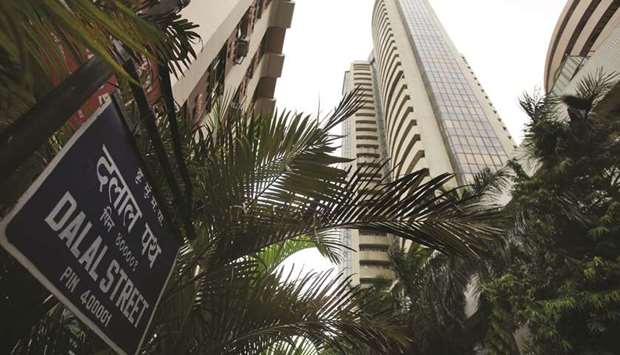HDFC Bank and ICICI Bank were the biggest drags on the S&P BSE Sensex. The benchmark Sensex index fell 1.24%, or 409.73 points, to 32,596.54 yesterday. So far this year, it has declined 4%.
The gauge has tumbled 10.2% from its January 29 record close, its first correction in more than 15 months. Seventeen of 19 sectoral sub- indexes slipped into the red, led by a gauge of real estate and metal companies.
Shares tumbled globally and investors sought out havens in Treasuries and gold futures after the US unveiled $50bn of tariffs against China, which announced plans for reciprocal taxes, denting already weakened demand for riskier assets including India.
“Investors are trying to assess the fallout of the protectionism steps by the US and how these manufacturing gaps will be addressed,” Sunil Subramaniam, chief executive officer at Sundaram Asset Management Co, said by phone. “Volatility is here to stay in the short term.”
Indian stocks closed at multiple records this year until February, when a global rout in equities wiped out the year’s gains. Since then, government plans to tax stock gains, a bank fraud and cracks in the ruling Bharatiya Janata Party’s support base have fuelled concerns that the gains were overdone.
Though global equities have rebounded from their February lows, the premium Indian stocks trade at versus their emerging- nation peers has shrunk to the smallest in five months. The Sensex trades at 17.3 times blended forward 12-month profits, near the lowest since April last year. At its peak in January, valuations were the highest in at least a decade.
“This volatility is a good time to buy into companies closely linked to the domestic economic outlook, that continues to remain positive,” Subramaniam said. “In the short term we will like to stick to defensive sectors related to consumption and retail finance focused businesses.”
Meanwhile the rupee yesterday pared all the morning losses and closed one-week stronger against US dollar post US President Donald Trump decided to slap tariffs on China.
The home currency ended at 65.01 a dollar, up 0.16% from its Thursday’s close of 65.11.
The rupee opened at 65.18 a dollar and touched a high and a low of 64.98 and 65.20, respectively.
Trump instructed US trade representative Robert Lighthizer to impose broader tariffs on at least $50bn in Chinese imports, as recompense for alleged intellectual property abuses. In response to Trump, China said it does not fear a trade war with the US and announced plans for reciprocal tariffs on $3bn of imports from the US.
Bond yield fell for the third session to hit five week low ahead of the April-September bond auction calendar which is expected to be out first week of April.
The 10-year bond yield ended at 7.557%—a level last seen on February 14, compared to its previous close of 7.558%. Bond yields and prices move in opposite directions.
So far this year, the rupee fell 1.7%, while foreign investors have bought $1.66bn in equity and sold $84.40mn in debt market.
Asian currencies were trading higher. Japanese yen was up 0.4%, Singapore dollar 0.21%, Thai baht 0.18%, China offshore 0.12% and China renminbi 0.05%. However, South Korean won was down 0.74%, Indonesian rupiah 0.23% and Taiwan dollar 0.13%.
The dollar index, which measures the US currency’s strength against major currencies, was trading at 89.623, down 0.26% from its previous close of 89.857.

